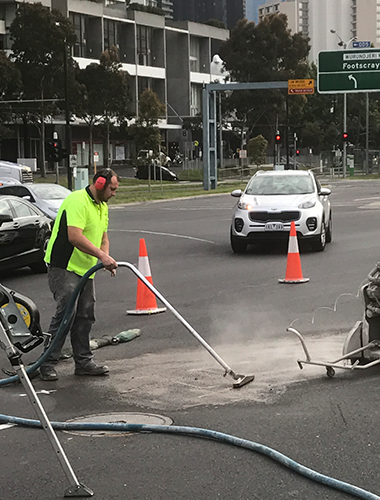Concrete Slurry Removal: Primary Strategies for Minimising Jobsite Cleanup
April 24, 2024
Minimise cleanup hassle in construction works with concrete slurry removal by Power Concrete Cutting. Discover primary methods to streamline job site cleanup.
The slurry produced by concrete cutting, drilling, grinding, and other processes must be eradicated through concrete slurry removal. Slurry, which is a mixture of water and concrete particles, must be managed and disposed of properly as it can cause environmental hazards, clog drainage systems, and create a messy worksite.
Effective concrete slurry removal strategies by Power Concrete Cutting can help minimise cleanup efforts and maintain a safe and efficient site.
Key Effects of Slurry in Construction
Slurry, as mentioned earlier, can generate significant effects on construction projects. Some of them are as follows.
• Environmental Hazards: Slurry can pose environmental hazards if not properly managed. When discharged into soil or water bodies, it can contaminate groundwater, surface water, and soil, affecting ecosystems and aquatic life. Chemical additives and contaminants in the slurry can leach into the environment, which leads to water pollution and soil degradation.
• Workplace Hazards: Uncontrolled slurry can also create safety hazards for construction workers. Wet and slippery surfaces caused by slurry spills increase the risk of slips, trips, and falls. Moreover, inhaling airborne dust particles from dry slurry can pose respiratory health risks, exacerbating conditions such as asthma and bronchitis.
• Weaken Structural Integrity: Excessive accumulation of slurry on surfaces can compromise the structural integrity of buildings and infrastructure. If left untreated, slurry can seep into cracks and joints, causing erosion and weakening of the substrate. This can lead to premature deterioration of concrete structures and compromise their long-term durability.
• Project Delays: Inadequate management of slurry can result in project delays and disruptions. Cleaning up slurry spills and addressing environmental contamination issues can require significant time, resources, and regulatory approvals. Delays in slurry removal can impede construction progress, leading to schedule overruns and increased project costs.
Concrete Slurry Removal: Strategies
Many strategies can be used to remove slurry on construction sites. They include the following.
• Solidification and Absorption: One of the most common methods for concrete slurry removal is solidification and absorption. This involves adding a solidifying agent, such as an absorbent polymer or dry concrete mix, to the slurry to transform it into a solid mass. Once solidified, the slurry can be easily scooped up with shovels or vacuumed using industrial-grade wet/dry vacuums.
• Filtration and Separation: Another effective approach for concrete slurry removal is filtration and separation. This method utilises special equipment, such as sedimentation tanks, settling ponds, or filter presses, to separate solids from liquids in the slurry. The slurry is pumped or directed into the filtration system, where solid particles are trapped or settled out, leaving behind clarified water that can be safely discharged or reused.
• Vacuum Extraction: Vacuum extraction is a highly efficient method for removing wet concrete slurry from floors, surfaces, and containment areas. Industrial-grade wet/dry vacuums equipped with HEPA filters and specialised attachments are used to suction up the slurry and contain it within sealed drums or collection tanks. They allow for precise and targeted slurry removal, reducing cleanup time and labour costs while maintaining a clean and safe worksite environment.
Effective concrete slurry removal by Power Concrete Cutting is essential for maintaining a clean, safe, and efficient job site environment in construction and renovation projects. By implementing one of these primary strategies, we can streamline cleanup efforts, reduce environmental impact, and enhance the efficiency of your building projects.
Optimized by: Netwizard SEO

